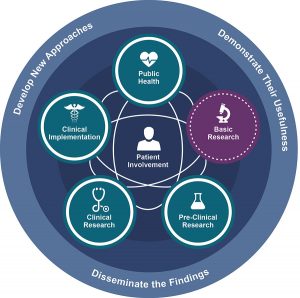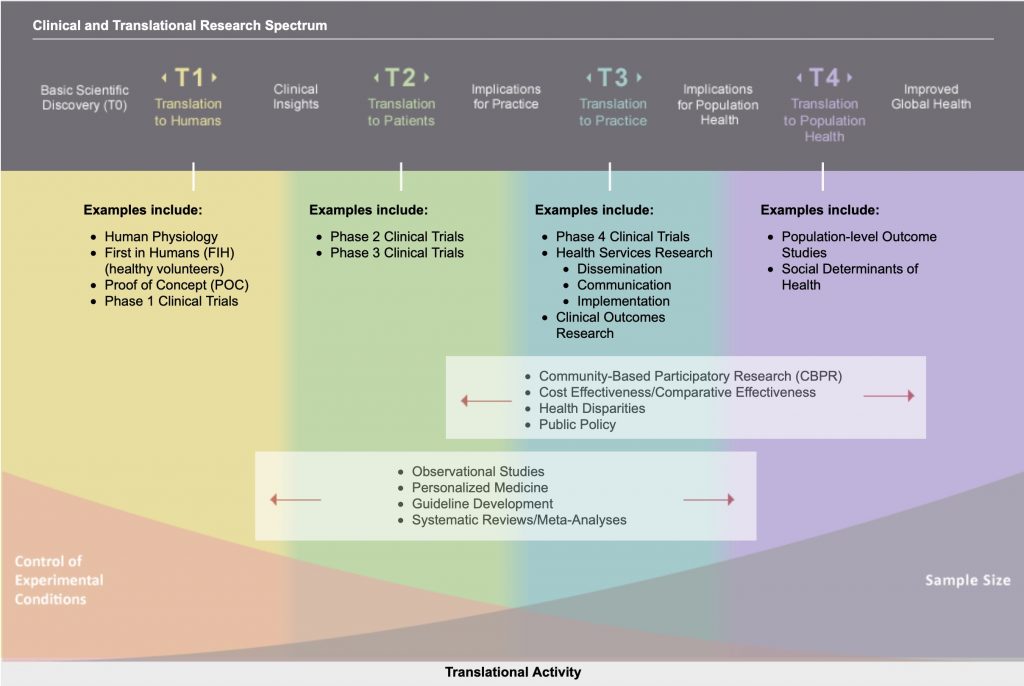
Since the early 2000’s, biomedical and clinical research has advanced from a ‘single lab’ model to the concept of translational research that links phases of biomedical research across a continuum of activities. By doing this, we can shorten the amount of time it takes to move drugs and other clinical discoveries and treatments from the basic science researcher’s lab to the bedside where these innovations may be tested on patient populations, ultimately to research that influences the health of communities and larger patient populations. The goal is that can more influence human health using effective and efficient processes.
In the Translational Spectrum Model (Figure 1), these actions involve many different areas of medicine, research, and public health. At the center of translational research is patient involvement. The outer band highlights the three critical outcomes of translational research: 1) Develop new approaches, 2) Demonstrate their usefulness, and 3) Disseminate the findings.

Most clinical and translational researchers are familiar with the ‘Four T’s’ of this type of research (Figure 2). This chart shows the types of studies that are associated with each of the translational phases. It is another way of seeing the clinical and translational process, helping researchers better understand where their research may fit along this continuum and how different type of study designs might work to help move their research to higher levels of translation. Again, the translational science spectrum is a pathway for research going from basic, biological studies to interventions that improve the health of individuals and, ultimately, the population locally and then globally.
Still have questions about how the Translational Science Spectrum is put into action? Then, we invite you to sit back and watch this short video that in less than five minutes will explain how the Clinical and Translational Research Spectrum work in real life – in the development of new drugs.
